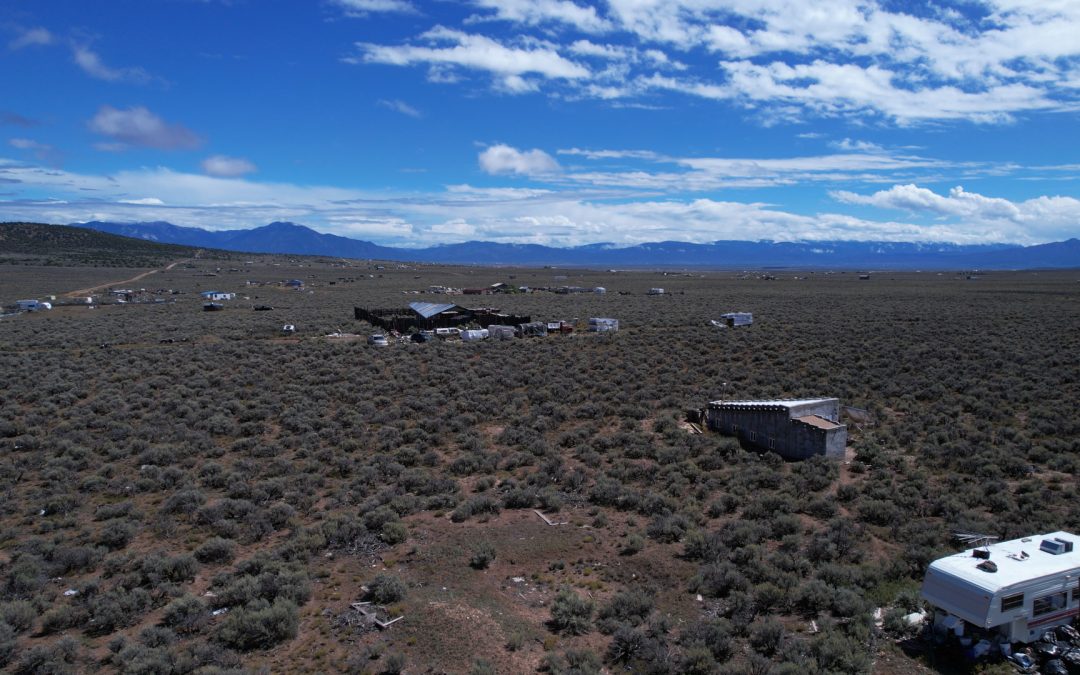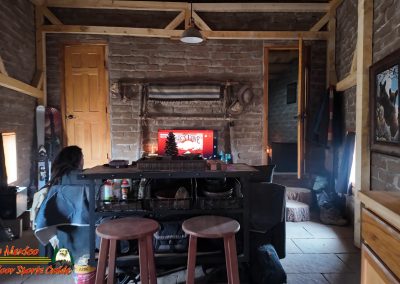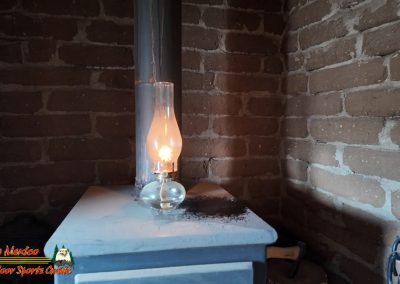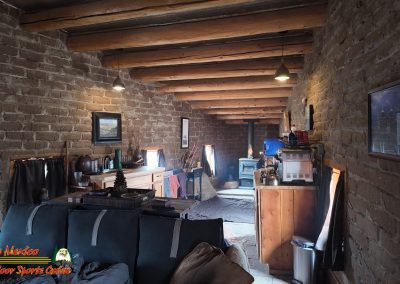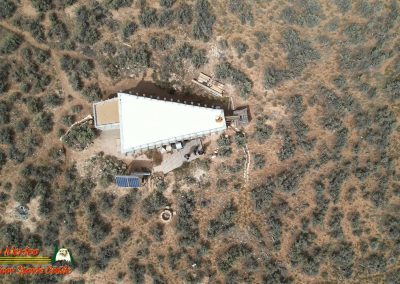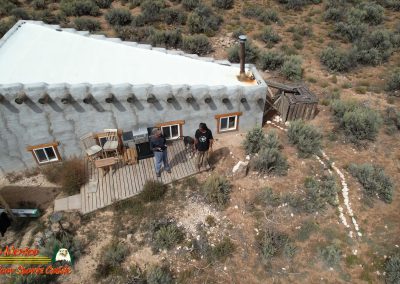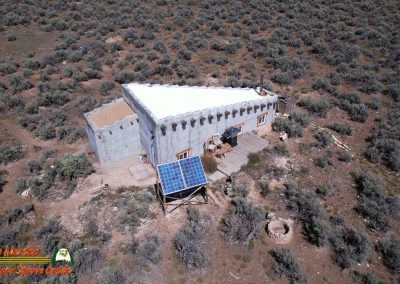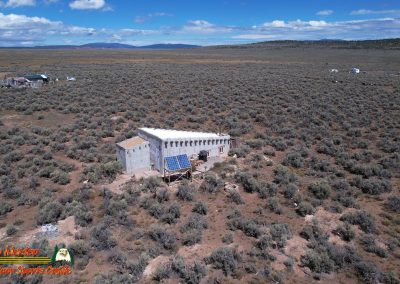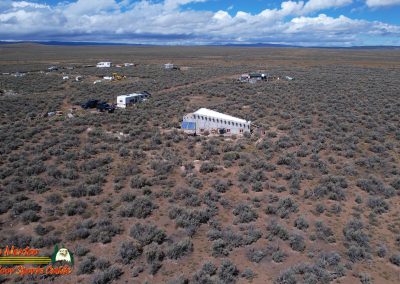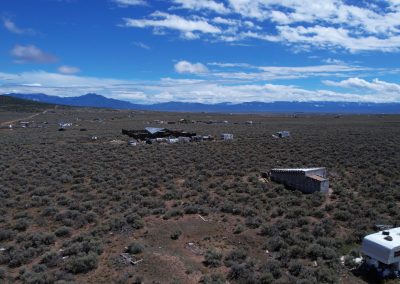Introduction: Exploring Taos Mesa History
If you’ve ever driven west out of Taos, New Mexico, you’ve seen it—a vast open tableland stretching toward the horizon, rimmed by snowcapped peaks to the east and ending in the dramatic gorge of the Rio Grande to the west. This is the Taos Mesa, known locally simply as “The Mesa.” In the county’s public property records, it’s referred to as Carson Estates. The story of how this rugged expanse came to be subdivided, sold, and settled is both a tale of land development and human tenacity.
In this blog post, we’ll dig into Taos Mesa History, tracing the subdivision of Carson Estates, who the developer was, how the land has been used over the decades, and what life looks like there today. We’ll also look at the people who call it home, including those drawn by the appeal of off grid living and adobe home construction, and explore why this corner of northern New Mexico continues to attract dreamers, artists, and self-reliant souls.
When Carson Estates Was Originally Subdivided
The subdivision of Carson Estates—better known to locals as Taos Mesa—goes back to the late 1960s and early 1970s. During that era, New Mexico, like much of the American West, saw waves of speculative land development. Large tracts of ranchland were purchased by developers who divided them into smaller parcels, often ranging from half an acre to several acres apiece.
Carson Estates was one such project. The land, stretching over tens of thousands of acres just west of Taos, was carved up and marketed to out-of-staters seeking a slice of Southwestern wilderness. Advertisements appeared in newspapers and magazines far beyond New Mexico, offering “cheap land in Taos” for those dreaming of escape from city life.
Most parcels were sold without utilities, paved roads, or water rights. Buyers were promised stunning mountain views and affordable acreage but were left largely to their own devices to figure out how to make the land habitable. In that sense, Carson Estates became a blank slate—a wide-open experiment in self-reliance.
The Developer Behind Carson Estates
The original developer of Carson Estates was part of a broader trend in mid-century American real estate. Large investment groups, sometimes based in Texas or California, would purchase land at relatively low cost, subdivide it on paper, and then market it across the country.
Records indicate that Carson Estates was developed by a company that saw opportunity in Taos County’s open expanses. Like other speculative subdivisions in New Mexico, the emphasis was less on building infrastructure and more on quickly selling parcels. Buyers were enticed with promises of “land for less than a new car” and romantic images of Taos’s artistic reputation and natural beauty.
Though the developer’s role largely ended after the lots were sold, their actions permanently reshaped the way the Mesa would evolve. By splitting the land into thousands of small plots, they created a patchwork community that would later attract a wide range of residents—from locals seeking affordable housing, to transplants inspired by Taos’s artistic and countercultural vibe.
Taos Mesa Today: A Landscape of Contrasts
To understand Taos Mesa today, you need to appreciate its contrasts. Drive across its dirt roads, and you’ll see everything from handmade adobe home construction projects to experimental Earthships, from trailers and tiny homes to traditional stick-built houses. The Mesa has become a living showcase of architectural creativity, much of it fueled by the need to adapt to an off grid living reality.
Electric power lines reach only certain areas, and many residents rely on solar panels or wind turbines. Water is another challenge; there are few wells, so water catchment systems, hauling from Taos, and community water delivery points are common. The winds sweep across the open plateau, making shelter design a necessity, while the high desert climate demands both insulation for cold winters and ventilation for hot summers.
Despite these challenges—or perhaps because of them—the Mesa has become one of the most interesting and diverse residential areas in Taos, New Mexico.
Who Lives There?
So, who are the people who make their homes on the Mesa?
-
Artists and Dreamers: Since the 1960s, Taos has drawn painters, sculptors, musicians, and writers seeking inspiration in the stark desert beauty. Many couldn’t afford land in town, but Carson Estates offered cheap plots where creativity could flourish.
-
Off-Grid Enthusiasts: For those passionate about sustainability and independence, the Mesa is ideal. With solar technology improving over the years, residents have built efficient, eco-friendly homes powered entirely by renewable energy.
-
Retirees and Locals: Some longtime Taoseños and retirees bought Mesa lots as affordable housing alternatives. Others inherited parcels from parents who purchased them decades ago.
-
Alternative Lifestyle Communities: The Mesa has also attracted intentional communities, from Earthship colonies to spiritual groups who value the freedom of the land.
-
Working Families: Increasingly, with Taos’s rising housing prices, the Mesa provides one of the last affordable options for working families. Though commuting from the Mesa into town requires a vehicle and good tires for the dirt roads, many find the trade-off worthwhile.
Off Grid Living on the Mesa
Few places in the U.S. embody the idea of off grid living quite like Taos Mesa. For decades, residents have relied on ingenuity to meet their daily needs. Solar power arrays are a common sight, and water catchment systems are standard for most homes. Composting toilets and septic systems dot the landscape.
Living off grid here isn’t just a lifestyle choice—it’s often a necessity. Many of the roads remain unpaved, snow in the winter can make access difficult, and utility hookups can be prohibitively expensive. Yet for those who embrace it, the independence is rewarding. There’s a sense of freedom in knowing your home isn’t dependent on municipal systems, and for many, that self-reliance is a key part of why they chose the Mesa.
Adobe Home Construction and Earthships
Another fascinating element of Taos Mesa History is the architectural experimentation that has taken place. Northern New Mexico has a centuries-old tradition of adobe home construction, using sun-dried earth bricks to create thick-walled, energy-efficient homes that fit beautifully into the desert landscape. Many Mesa residents continue this tradition, building adobe homes that combine traditional methods with modern design.
Then there are the Earthships—radically sustainable homes built with recycled materials like tires, bottles, and cans, pioneered by architect Michael Reynolds. The Mesa became a hub for Earthship experimentation, and today, entire neighborhoods of these off grid homes stand as monuments to sustainable living.
Together, adobe homes and Earthships create a patchwork of unique dwellings, reflecting the diversity and creativity of the people who call the Mesa home.
The Mesa’s Challenges
Of course, living on the Mesa is not without its challenges. The dirt roads can be rough, sometimes impassable after heavy rain or snow. Water hauling can become a chore. Winds can be relentless, and the open landscape leaves homes exposed.
There are also social and economic realities. Some lots remain vacant, owned by people who bought them decades ago but never developed them. Other areas show signs of poverty, with makeshift housing and minimal infrastructure.
Yet, these challenges are also part of the Mesa’s identity. They create a landscape where only the resilient and resourceful thrive, reinforcing the spirit of self-reliance that defines the community.
Why Taos Mesa Continues to Attract People
Despite—or perhaps because of—its ruggedness, the Mesa remains magnetic. For those burned out by city life, the vast horizon and quiet solitude offer a sense of peace. For artists, the ever-changing light on the mountains and desert fuels creativity. For sustainability enthusiasts, the Mesa is a proving ground for off grid living and eco-conscious architecture.
And, of course, there’s affordability. In an area where land and housing prices have soared, Mesa lots remain comparatively accessible. This makes it one of the few places near Taos where newcomers can still carve out a home.
Taos Mesa History in a Broader Context
To fully appreciate Taos Mesa History, it helps to place it in the larger story of Taos. For centuries, the Taos Pueblo people have lived just to the east, sustaining themselves with farming and community life in one of the oldest continuously inhabited settlements in North America.
The Mesa, by contrast, was largely open grazing land until the late 20th century subdivision. Its transformation from ranchland to a patchwork of off grid homesteads reflects broader cultural shifts—the back-to-the-land movement of the 1960s and 70s, the rise of alternative architecture in the 1980s and 90s, and today’s ongoing search for independence and sustainability.
Conclusion: The Living Story of Taos Mesa
The story of Taos Mesa History—or Carson Estates, as it appears in the county records—is still unfolding. What began as a speculative land development in the late 20th century has become a living experiment in resilience, creativity, and independence.
From its early days of cheap plots sold to dreamers, to today’s thriving off grid community of adobe homes, Earthships, and solar-powered lifestyles, the Mesa continues to attract those willing to carve out a life on their own terms.
For people drawn to Taos, New Mexico, whether for its artistic spirit, its natural beauty, or the promise of self-reliance, the Mesa offers a unique opportunity to live differently. And while life on the Mesa isn’t easy, it’s exactly that challenge that has made it such a distinctive chapter in the story of Taos.
In the end, Taos Mesa History isn’t just about land deals or subdivision maps—it’s about the people who embraced its wide-open spaces and turned it into a community.

